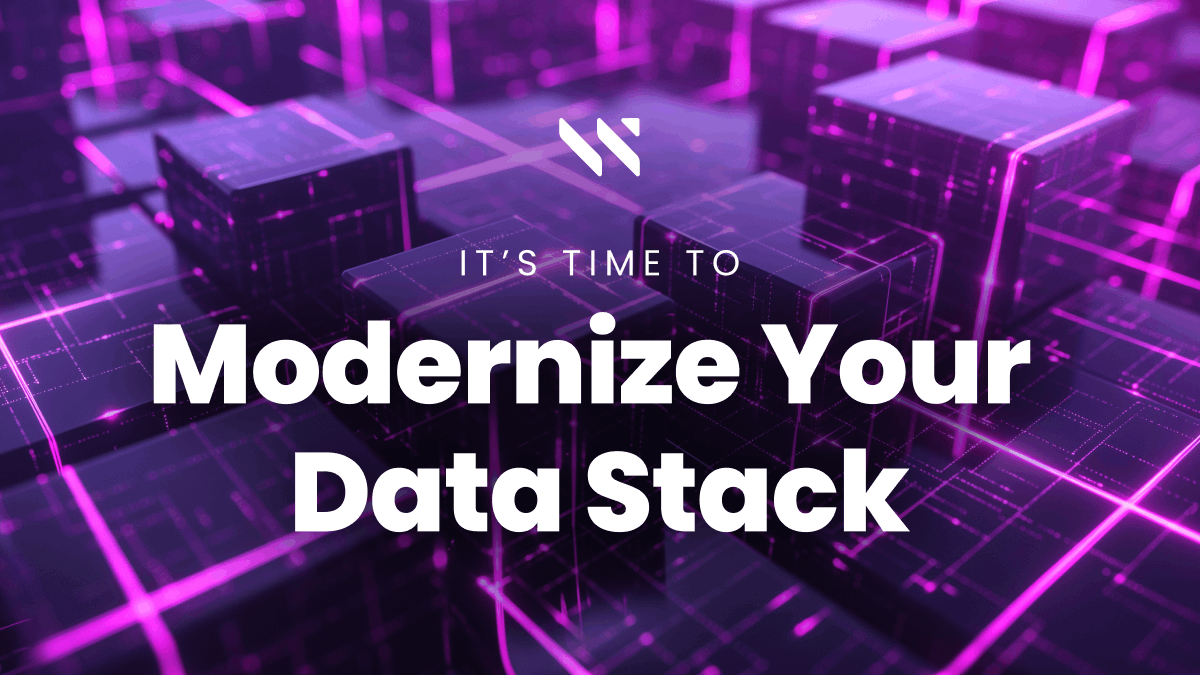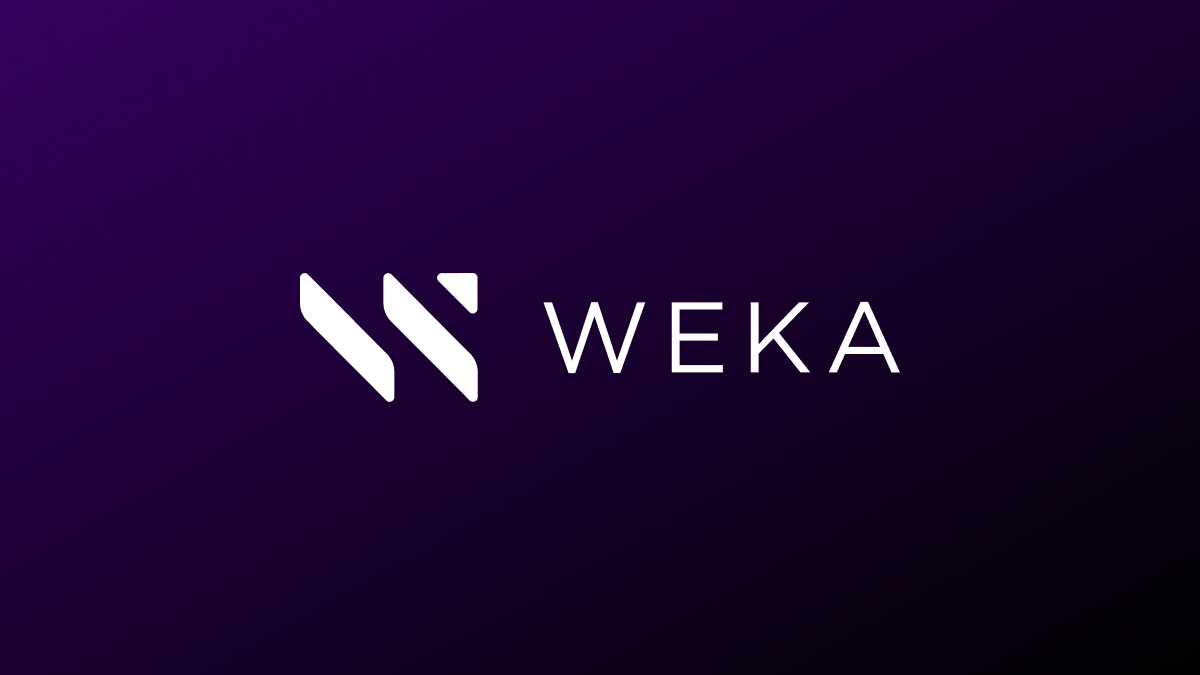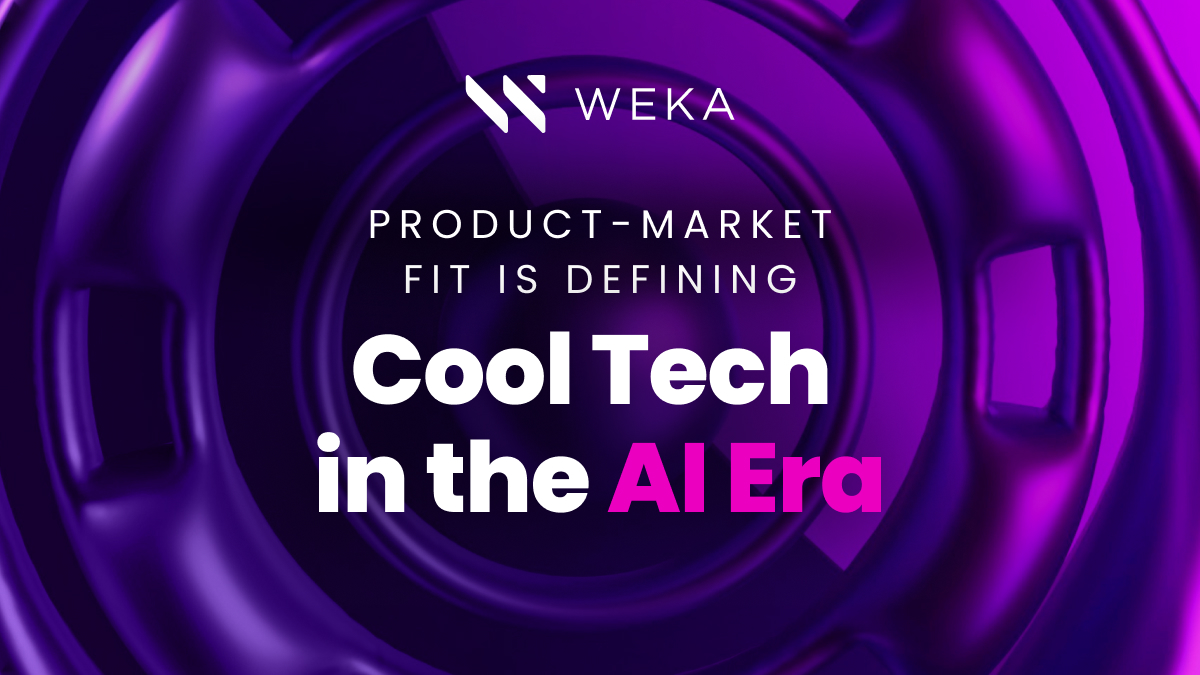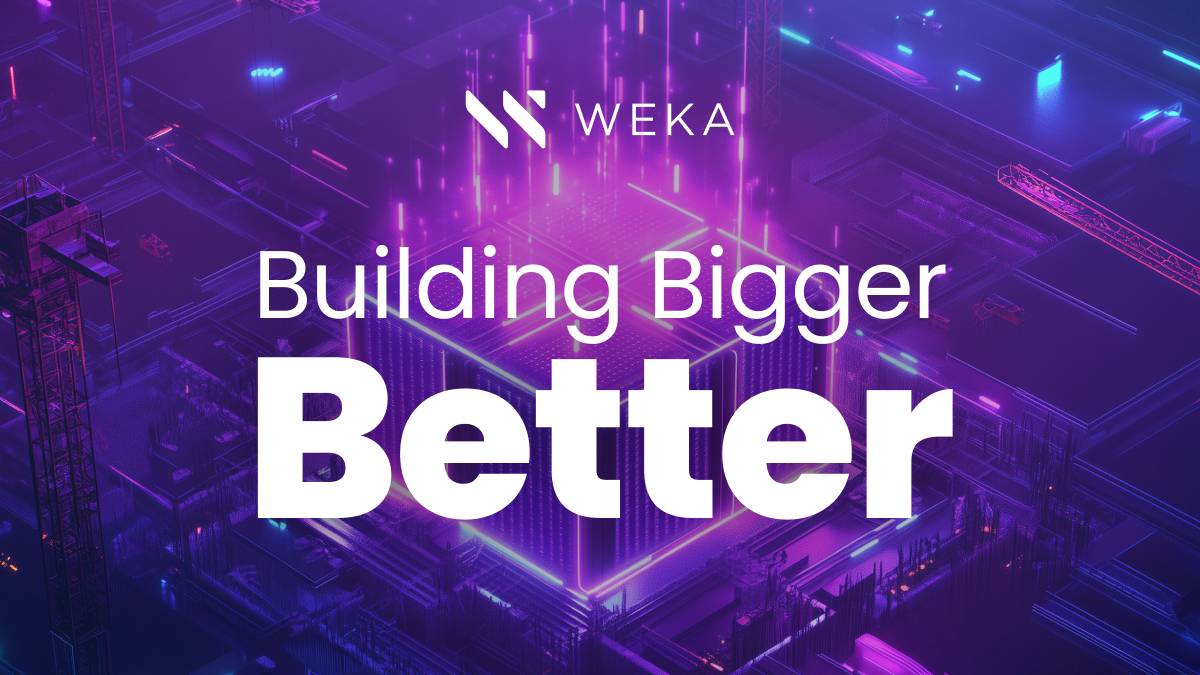If You Were Waiting For a Sign That It’s Time to Modernize Your Data Stack, This Is It.

When we founded WEKA a decade ago, we weren’t entirely sure what exactly we were building yet, but we knew three things: First, traditional data storage approaches would not be able to sufficiently scale to support the needs of cloud, high-performance computing (HPC) and AI/ML applications and workloads of the future. Second, the enterprise storage industry’s business model was fundamentally flawed and not customer-centric. Third, we wanted to challenge the status quo, not build a new version of that legacy data infrastructure mousetrap.
These became our north star, guiding my fellow cofounders and me as we began architecting what would later become the WEKA® Data Platform.
The O.G. Data Platform
WEKA first introduced the concept of a software data platform for AI, accelerated compute, and other modern performance-intensive workloads in 2021.
Let’s just say it wasn’t exactly warmly received by industry pundits—at least not immediately. We encountered resistance initially, and our competition threw darts. But the wave of accelerated compute and networking innovations that soon flooded into enterprise data centers, powering a new generation of high-performance media, AI, machine learning, and quantum computing workloads, has turned the tide.
Today, nearly all of our industry peers are embracing data platform nomenclature in their marketing, and even the world’s preeminent industry analysts are taking note.
In its recent research report aptly titled “Stop Buying Storage, Embrace Platforms Instead,” Gartner estimates that 50% of Infrastructure & Operations leaders will replace storage appliances with holistic, platform-based data storage and delivery solutions by 2028.
We predict that this percentage will be much, much higher.
And if today’s announcement of our Series E funding raise with heavyweights like Valor Equity Partners, NVIDIA, Generation Investment Management, Atreides Management, and many others is any indication, our investors think so, too.
How We Got Here
If you’ve been in the tech industry long enough, you’re likely in the know on the old joke about innovating new products. You must always consider three customer value propositions—faster, better, cheaper—but you only get to choose two.
We wanted to flip that script. We envisioned a world where customers wouldn’t be forced to make compromises in their data environments. Where a single software-based solution that could be deployed anywhere would deliver a simple, seamless data management experience across edge, cloud and on-premises environments.
Where We’re Going
It’s 2024. The industry is finally waking up to what we saw coming a decade ago.
We predict every enterprise data stack will require an AI-native, data pipeline-oriented architecture that incorporates what I call the “eight S’s” to support enterprise AI, quantum computing, 16K media, and the next-generation workloads of the future:
- Software: By now, we can safely assume we live in a world where close to everything is software-defined. Your data management approach needs to be, too, so you can be flexible and agile today and into the future.
- Speed: With the arrival of GenAI, enterprise data requirements are becoming increasingly complex, while expectations for speed are rising. GPUs and modern networking have improved their performance by 4-5 orders of magnitude over the last decade, and they require much faster access to data to ensure they are balanced.
- Scale: Modern data environments are growing rapidly. For example, only a few years ago, we announced that WEKA had over an exabyte of data under management across its customer base. Today, we have several individual customers running exabytes at a time. Unstructured data management is a common data management challenge in the AI era, so enterprise data stacks must be able to handle a variety of IO patterns, data types and sizes at ever-increasing volumes and velocity.
- Simplicity: As our lives get more and more complex and distributed, we crave solutions that can make things a little easier. Your organization’s data needs to be accessible seamlessly across multiple data centers, whether they’re on-premises or in the cloud, and using different protocols. This helps you create a “data ocean” where data flows freely across networks vs. within legacy storage silos that can impede the speed and scale you’re trying to achieve.
- Sustainability: Going green is worth its weight in gold. Yet modern workloads – especially AI and emerging GPU clouds – demand immense energy resources that threaten to accelerate instead of reversing our global energy dependencies and carbon emissions if left unchecked. Implementing a data pipeline-oriented architecture creates storage and data management efficiencies that drive GPU utilization higher and provide elasticity between on-premises and cloud environments, consuming less power and reducing carbon emissions. It can even help shrink your data center footprint.
- Security: Every day, there’s a new headline about nefarious actors breaching enterprises and stealing their data, so information security is table stakes for all organizations, ideally with multitenancy and at-rest and in-flight encryption at the file system level for easier management.
- Safety: Enterprises need resiliency, availability, and durability to enforce the integrity, coherency and consistency of data to support the organization.
- Savings: The bottom line is that a data platform can contribute to board-friendly cost savings by delivering variable-length block sizes and data reduction, including compression and deduplication, tailored to your environment and organizational needs. And if you rely heavily on cloud services, auto-scaling will help ensure you only pay for the capacity you need.
Creating a bold, new future is no easy task, and WEKA certainly isn’t the only vendor out there trying to rethink the enterprise data stack to meet customers’ needs. However, we believe this evolution is long overdue, and we’re proud to be doing our part to drive the next wave of industry disruption that will ultimately help our customers thrive in the AI era and beyond.





